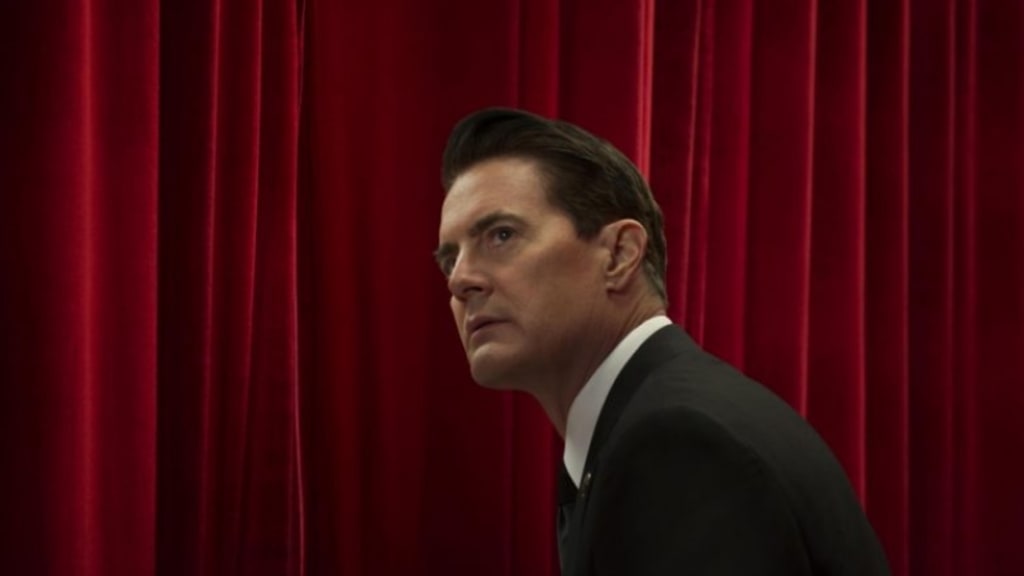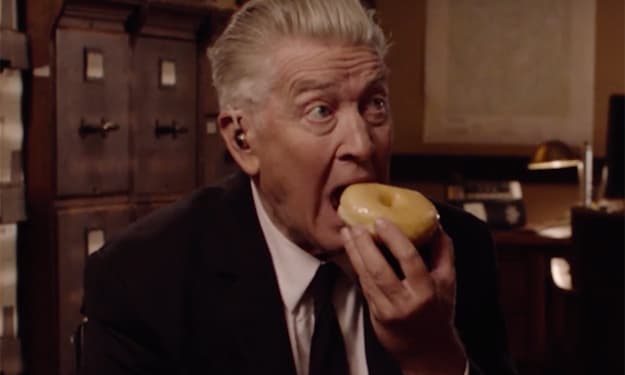Twin Peaks 2017: The Evolution of Twin Peaks
How new narrative drive and modern film-making technology has made Twin Peaks broader yet more comprehensible than ever.

***POSSIBLE SPOILERS - PARTS 1 to 4***
There has been an almighty wave of reactions online to the revival of Twin Peaks, spanning the spectrum of emotional responses, from amazement, bewilderment, excitement, annoyance, boredom and outright contempt. Personally, having seen all 4 parts, I was blown away; from the opening moments I was mesmerised by the vivid imagery, contemplative pacing and the mysterious, dangerous mood that seemed to permeate every scene. The lack of cosy nostalgia was impressively bold, almost nothing feeling like a 'comfortable' reminder of the original, despite the return of familiar faces and allusions to plot beats of the season one Pilot. The wider scope of the story became immediately apparent, as new characters arrived (and left...) in as yet unconnected plots unfolding in New York, South Dakota and the Black Lodge itself. To me this feels like a natural evolution of Twin Peaks; the first two seasons featured the town as a microcosm of America, so it seems fitting that Peaks is now a smaller part in exploring similar themes on a much grander scale.
The references and allusions to the story and mythology of Twin Peaks are important to this idea too, particularly in the Buckhorn, South Dakota scenes; the discovery of a body, a seemingly upstanding member of the community accused of murder, revelations of infidelity and the apparent influence of the supernatural are all there to evoke Peaks (without a nod and wink) in a different location. Buckhorn is unlikely to be the last place we see these parallels being drawn as full scope of the story is gradually revealed.
Of the many reactions I've seen since the premier though, confusion is one I'm not relating to; for me, Twin Peaks has a clearer narrative drive than perhaps it ever has. I'm not saying I understand where every plot point will lead, far from it in fact, but I do feel that this season so far is more deliberate and purposeful. There are a number of reasons for this and a major one I believe is the influence of Mark Frost; Frost understands TV writing better than Lynch, and how much or little information you can, and need, to give to viewers. This thought struck me hardest during the Red Room sequences; previously they were completely cryptic, with the pieces of the puzzle designed only to fit together at very specific moments. Now though there were actual lines of dialogue that drove the plot forward - "Hello, Agent Cooper. You can go out now" and "You have been tricked". It's not hard to imagine Frost advising Lynch that, based on the sheer amount of time he wants to spend in other realms and how oblique the imagery will be, there just has to be more direction given. Frost is clearly the guy who understands that just the right amount of convention, in the right places, is needed to keep an audience (of fans or newbies) drawn in.

The box...oh dear god, the box...
Advancements in TV and film-making technology have also been a powerful tool in creating a more comprehensible vision of Lynch's perspective. The original series had to rely on practical effects, like set design and lighting, to bring Lynch's ideas to life, and that meant they were limited by what they could construct, and therefore what Lynch could convey. With the advent of CGI, Lynch is now able to go wherever his thought process takes him, as virtually any imagery no matter how abstract can be created, something Lynch has taken full advantage of. The perfect example of this is the opening 35 minutes of Part 3, detailing Cooper's journey through the Black Lodge, in which Lynch is able to convey the idea that the human spirit is a form of electromagnetic energy, and like all energy, it can't be destroyed, only moved or displaced (whilst suggesting a bunch of plot-specific ideas too). Describing the imagery itself to you simply wouldn't be enough; it'd be too spoiler-y for one, and it has to been seen and heard in its indelible form to be intuited and understood. Without CGI, it's hard to believe it could be created so precisely, something that can also be said of Michael J Anderson's replacement, the "evolution of the arm", an electric-crackling sycamore tree with a glowing brain; trust me when I say it makes more sense on screen than the page.
Drone cameras have also proven themselves essential in visualising the new world of Twin Peaks, adding establishing location shots that would be otherwise next to impossible, the almost diagonal tracking shot up a building in New York being a prime example. Lynch and Frost aren't just using them for aesthetic value mind you; they are also there to evoke the sheer scale of story and its themes. It should be clear to those that have watched parts 1 to 4 that Twin Peaks is no longer just the story of one town and its residents; it is about how that narrative fits into America as a whole, what it says about American life, and in the broadest sense, the duality in the nature of the human experience. I for one cannot wait to see how else this series grows and evolves in the next 14 episodes.
About the Creator
James Giles
Writer, confessed geek and pop culture enthusiast, loves film, TV and video games. Blogged and written for various websites on all the above.






Comments
There are no comments for this story
Be the first to respond and start the conversation.